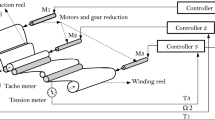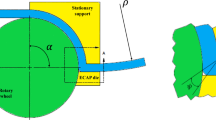Abstract
The present paper deals with the development of neural network (NN)-based expert system for modeling of 2024 aluminum tube spinning process. Tube spinning is a highly nonlinear thermo-mechanical process for producing large-diameter thin-walled shapes. It is interesting to note that the performance of the process depends on various process parameters, such as wall thickness, percentage of thickness reduction, feed rate, mandrel rotational speed, solution treatment time and aging time. Therefore, an NN-based expert system is necessary for modeling the tube spinning process. The input layer of NN consists of six neurons corresponding to the inputs of the tube spinning process. Moreover, the output layer consists of four neurons that represent four responses, namely change in diameter, change in thickness, inner and outer surface roughness. It is to be noted that the performance of NN depends on various factors, such as number of neurons in the hidden layer, coefficients of transfer functions and connecting weights, etc. In the present paper, three algorithms, such as back-propagation, genetic and artificial bee colony algorithms, are used for optimizing the said variables of NN. Further, the developed approaches are tested for their accuracy in prediction with the help of some test cases and found to model the tube spinning process effectively.














Similar content being viewed by others
References
Hasimoto H, Kita S, Sjibasaka T, Yoshida S (1980) On the deformation in the tube spinning. Himegi Industrial University report, no. 33A
Gur M, Tirosh J (1982) Plastc flow instability under compressive loading during shear spinning process. J Eng Ind Trans ASME 104:17–22
Lee KS, Lu L (2001) A study on the flow forming of cylindrical tubes. J Mater Process Technol 113:739–742
Rajan KM, Narasimhan K (2002) Effect of heat treatment of preform on the mechanical properties of flow formed AISI 4130 steel tubes—a theoritical and experimental assessment. J Mater Process Technol 125–126:503–511
Wong CC, Dean TA, Lin J (2003) A review of spinning, shear forming and flow forming processes. Int J Mach Tools Manuf 43:1419–1435
Davidson MJ, Balasubramaniyan K, Tagore GRN (2008) Experimental investigation on flow-forming of AA6061 alloy. J Mater Process Technol 200:321–325
Montgomery DC (2001) Design and analysis of experiments. John Wiley and Sons, New York
Fazeli AR, Ghoreishi M (2009) Investigation of effective parameters on surface roughness in thermo-mechanical tube spinning process. Int J Mater Form 2:261–270
Fazeli AR, Ghoreishi M (2011) Statistical analysis of dimensional changes in thermo-mechanical tube spinning process. Int J Adv Manuf Technol 52:597–607
Partihar DK (2008) Soft computing. Narosa Publishing House, New Delhi
Zohourkari I, Assarzadeh S, Zohoor M (2010) Modeling and analysis of hot extrusion metal forming process using artificial neural network and anova. In: ASME 10th biennial conference on engineering system design and analysis, vol. 4, pp. 831–839
Malviya R, Pratihar DK (2011) Tuning of neural networks using particle swarm optimization to model MIG welding process. Swarm Evolut Comput 1:223–235
Mali HS, Manna A (2012) Simulation of surface generated during abrasive flow finishing of Al/SiCp MMC using neural networks. Int J Adv Manuf Technol. doi:10.1007/s00170-012-4091-6
Ko C, Kim DH, Kim BM (1999) Application of artificial neural network and taguchi method to preform design in metal forming considering workability. Int J Mach Tools Manuf 39(5):771–785
Jiang S, Ren Z, Xue K, Li C (2008) Application of BPANN for prediction of backward ball spinning of thin-walled tubular part with longitudinal inner ribs. J Mater Process Technol 196:190–196
Dhanunjaya Y, Reddy A, Pratihar DK (2011) Neural network-based expert system for predictions of temperature distributions in electron beam welding process. Int J Adv Manuf Technol 55:535–548
Sasidhar M, Vundavilli PR (2012) Modeling of friction stir welding of Al 7075 using neural networks. Int J Appl Evolut Comput 3(1):66–79
Karaboga D, Akay B, Ozturic C (2007) Artificial bee colony optimization algorithm for training feed forward neural networks. Model Decisi Artif Intell LNCS 4617:318–329
Kumbhar PY, Krishnan S (2011) Use of artificial bee colony algorithm in artificial neural network synthesis. Int J Adv Eng Sci Technol 11(1):162–171
Karaboga D (2005) An idea based on honey bee swarm for numerical optimization. Technical report—TR06, Erciyes University, Computer Engineering Department, 2005
Author information
Authors and Affiliations
Corresponding author
Rights and permissions
About this article
Cite this article
Vundavilli, P.R., Phani Kumar, J., Sai Priyatham, C. et al. Neural network-based expert system for modeling of tube spinning process. Neural Comput & Applic 26, 1481–1493 (2015). https://doi.org/10.1007/s00521-015-1820-4
Received:
Accepted:
Published:
Issue Date:
DOI: https://doi.org/10.1007/s00521-015-1820-4




